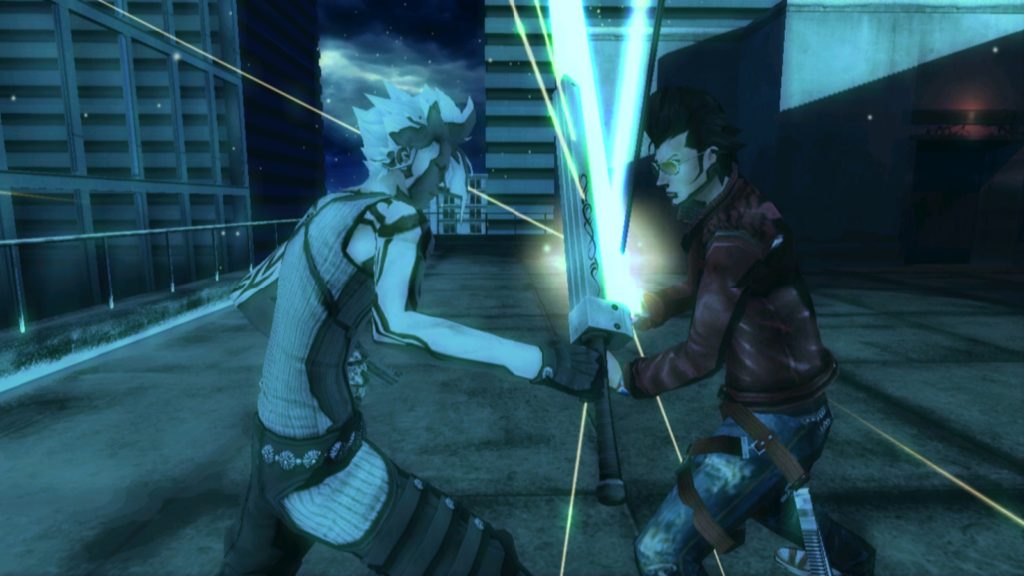
No More Heroes: Finding Meaning in Meaninglessness
“I wanna be number one. How’s that? Short and simple enough for ya?”
This line is one of the first things newcomers hear come out of Travis Touchdown’s mouth in the first No More Heroes game. It is a quote that rings throughout the minds of many fans looking for deeper meaning in the series’ quirky yet thought provoking writing. A search that isn’t foreign to those in love with the crazy universe of No More Heroes, nor of developer Suda 51’s other works. It is, however, a topic that has been discussed since the release of the game, with diehard fans exploring past the surface-level synopsis of a horny otaku assassin looking to be the best. However, the great irony of No More Heroes is that looking for that deeper message will only present those looking with nothing. Absolutely nothing.
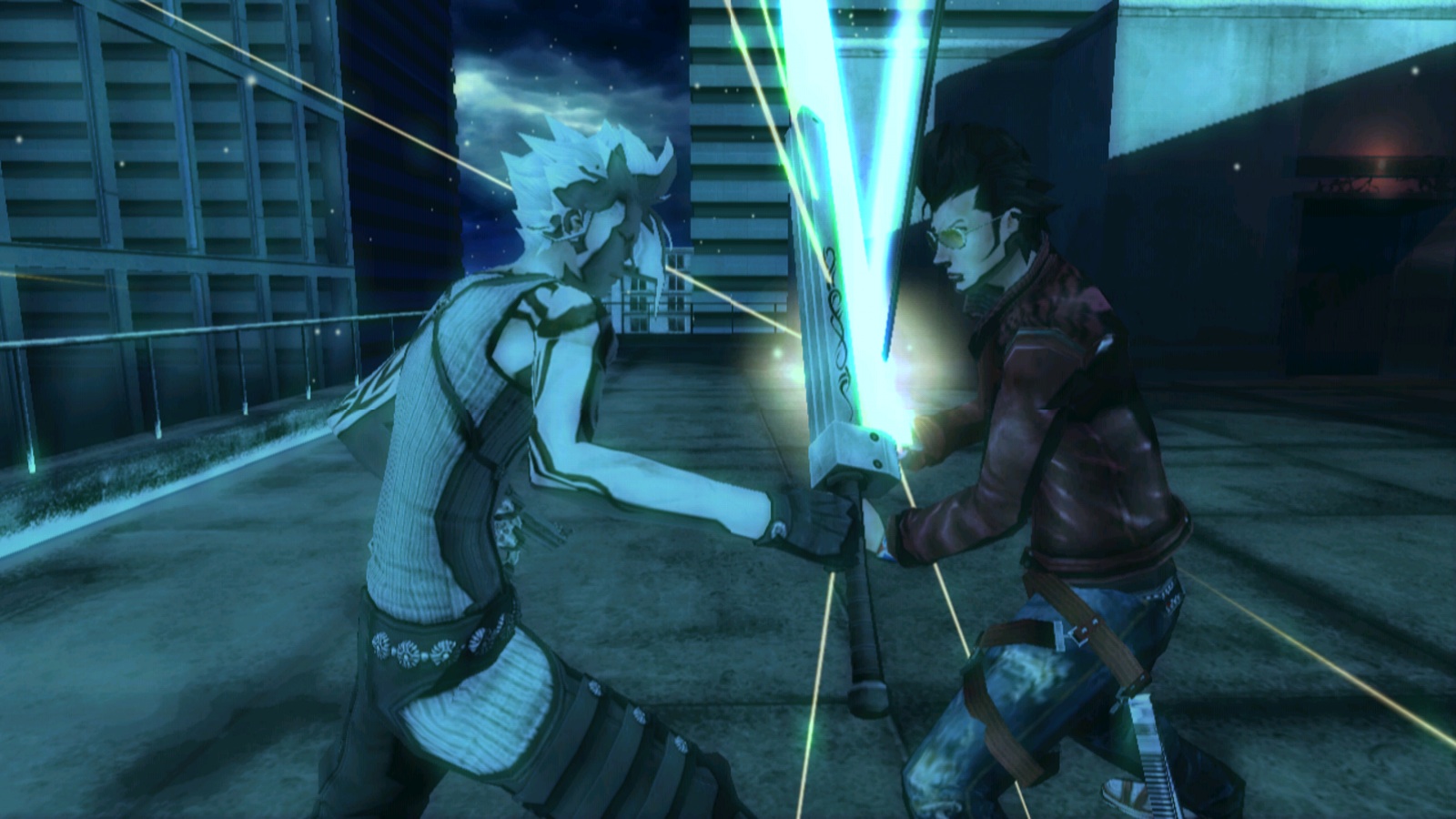
The No More Heroes games star Travis Touchdown, a stereotypical American weeaboo living a near impoverished life that when suddenly his life flips upside down after he wins a beam katana in an online auction. After a trip to a Death Match bar he meets Sylvia Christel, a mysterious woman that talks him into joining the United Assassins Association leading him to begin his journey to become the top ranked assassin of the association and get laid in the process. These two goals are what truly define Travis in the beginning of No More Heroes, though as he fights the top 10 assassins that are the antithesis to his way of life and distorted reflections of him things begin to change.
When Travis faces the 7th ranked assassin, Destroyman, he’s met with both a question and an opportunity to develop a new way of thinking when Destoryman asks why kill each other in meaningless bloodshed with Travis simply responding, “It’s about determining who’s best.” A philosophy that is shaken in his next battle with Holly Summers after she questions the meaning of his journey and calls him “a mere bud.” Of course, Travis replies that it’s dangerous to look for meaning in everything. However after meeting the first assassin that truly showed compassion he gets much more shaky on his stance after her death. After his new victory he finally faces the question that she and a few other assassins were laying before him: “Why?”
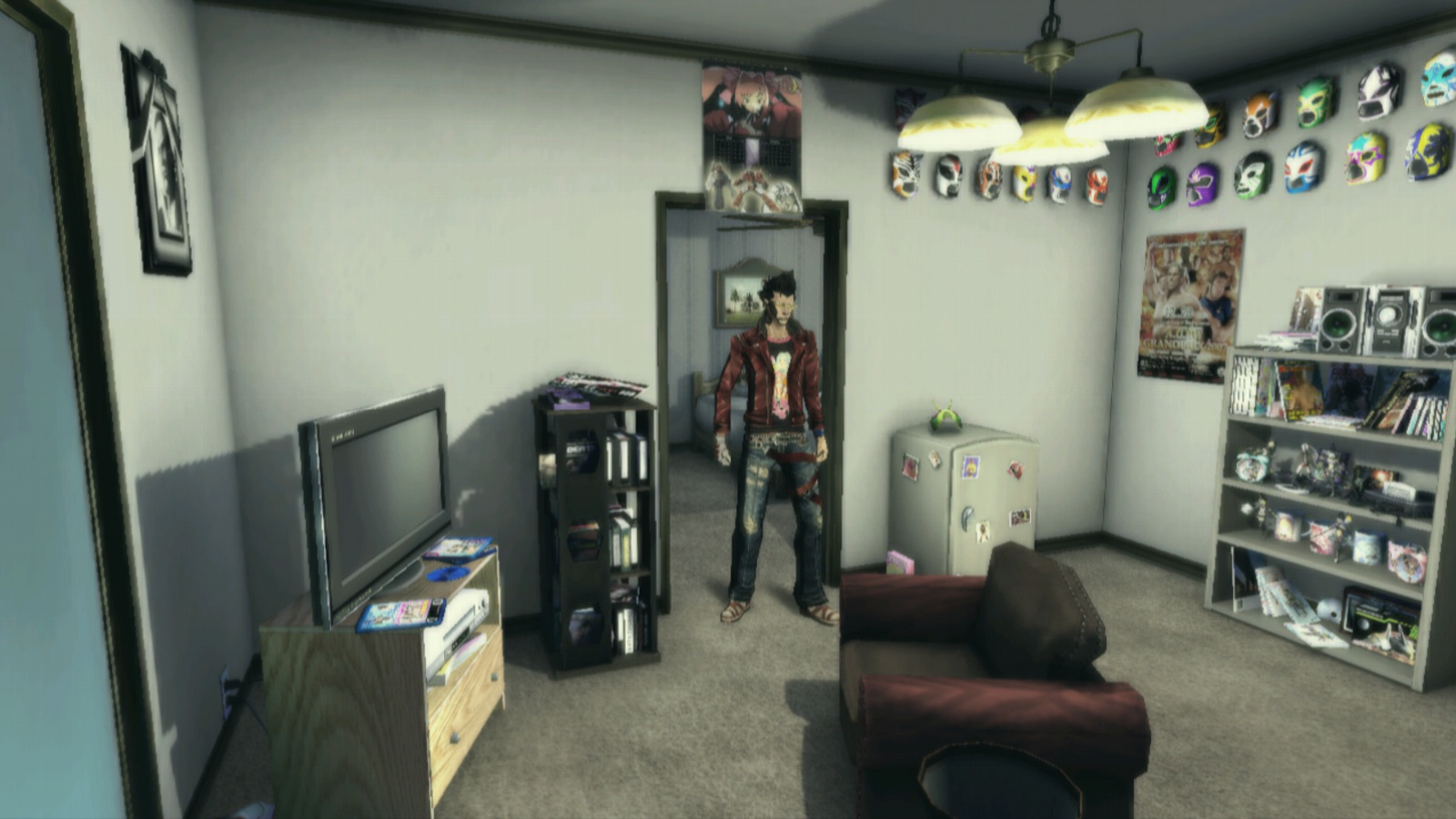
This question reaches its climax at the end of No More Heroes, when Travis realizes everything he has followed has been a sham: the money, the promised sex, the entire assassination ranking. All of Travis’s goals ended up being nothing more than mere words, leading Travis to ask, “What’s the point?” He recalls all the lives he’s cut short to follow along with some charade and is then faced with the dark truth: this isn’t a game with encounters ending in rivalry, but with severe and lethal consequences.
In the end of No More Heroes, though Travis is met with a few purposefully nonsensical life answers in meeting long lost family members, he ends up right where he started, dreaming of finding paradise and forever being stuck in battle because it’s all he knows. Much like any video game character, Travis only sees what he’s designed to see as noticed with the intended dullness of his town, Santa Destroy, a city made for Travis to go from battle to battle only shaken up by boring odd jobs meant to be the only break between Travis and his dream life. Suda plays off of the thought that Travis is a videogame character with a set objective and a player pushing him to follow through with that questionable goal which also connects the player directly to Travis, not only through the controller, but through his view on the mundane of everyday as well.
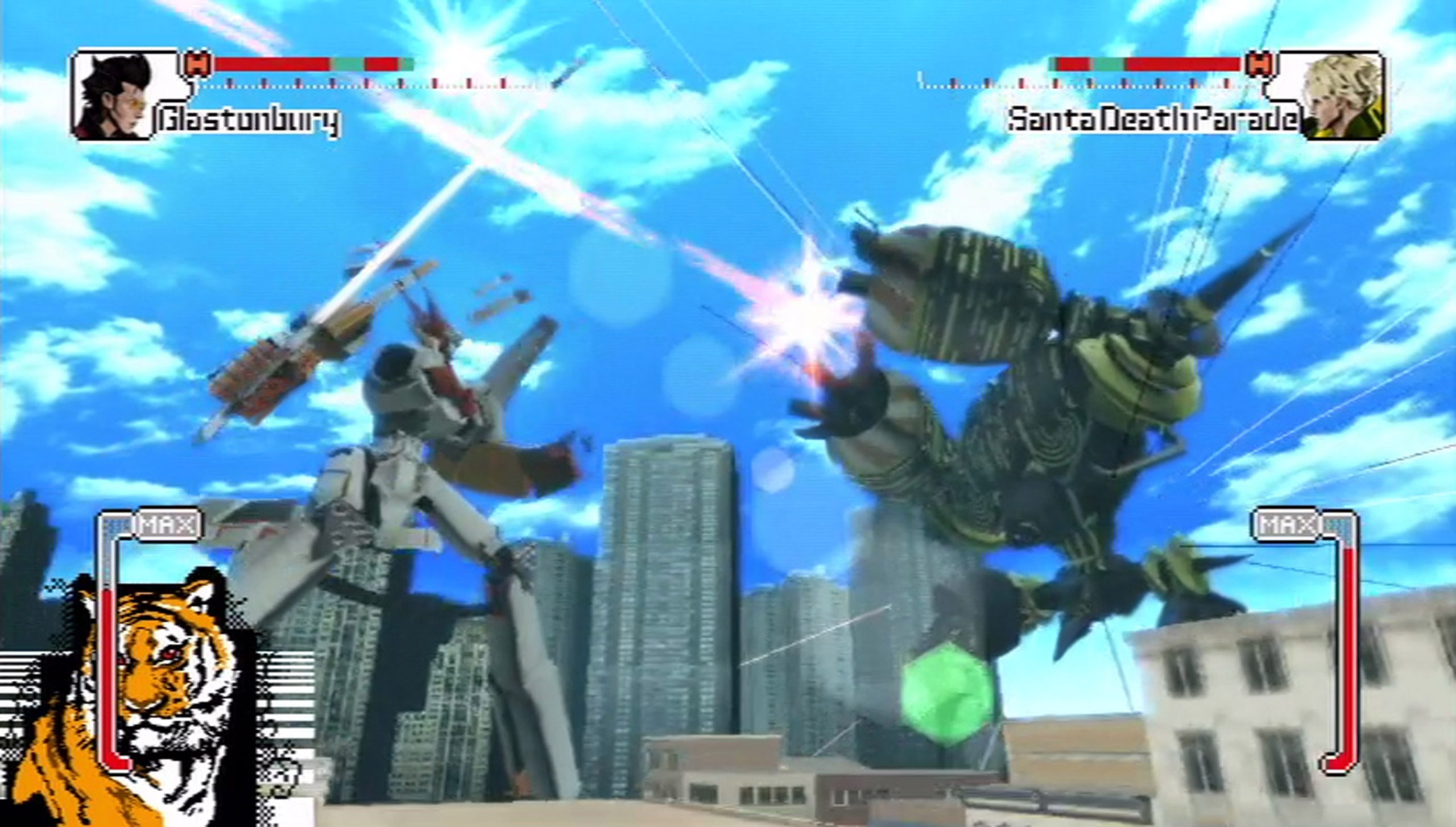
In the game’s less well-written sequel from a new director, No More Heroes 2, the idea of meaninglessness is further driven in with more nonsensical boss encounters and an intentionally unsatisfying final boss. In the spin-off follow up, Travis Strikes Again: No More Heroes, we find Travis having run away from his meaningless life of being an assassin living in a trailer in the middle of nowhere. In the middle of his “get away,” his past comes back to bite him in the form of Badman, the father of one of Travis’ past assassinations, Badgirl. The two are sucked into the mysterious game console, The Death Drive, where Travis is faced with his next quest. However, this time Travis isn’t killing other assassins, but himself.
Much like during his time alone, in this game Travis must face himself in the form of games featuring characters he grew up both playing and facing in the digital world. One by one, Travis takes down these characters after sharing introspective dialogue and unlocking a new side of himself that any gamer controlling him can relate to.
During the fight with his childhood game hero, Electro Triple Star, Travis is asked, “Why do we fight?” After getting his answer, which was just Travis telling him it gives him a bloodrush, Electro Triple Star replies, “Maybe it’s because it’s an action game… But the only stage prepared for us is one on which to fight.” A statement that harkens back to the life that Travis left behind in NMH 1 and 2. Furthermore, these clashes with old “friends” that Travis once looked up to mirrors the player’s return to the world of No More Heroes after years of waiting for a follow-up to the series sequel.
Travis Strikes Again is filled with many instances of Travis looking into his past and defeating himself to awaken a new self. This can not only be seen as a reflection of the player and Travis, but of the writer behind the character, Suda 51. This game gives the message of finding a reason to press on past the perceived meaningless of life. While for the gamer and Travis the key to that escape called paradise is games, in the case of Suda it seems to be the world of more freedom in game development, particularly indie games. In Travis Strikes Again: No More Heroes, the game manages to connect the creator, creation, and consumer and awaken them to a piece of their life that reminded them of why they began doing what they were doing in the first place–or to a new meaning behind why they did. In Travis’s case, this meaningless became finding family, friends, and genuine love to latch onto.
In many ways Travis Strikes Again can be seen as the grand redemption arc of the No More Heroes series that fills the void left by No More Heroes 2’s emptiness. Travis has finally found meaning in his life, and now No More Heroes 3 will act as his Return of the Jedi, with Travis finally becoming his best self and returning to what he left behind a new man to face the greatest threat of his life.





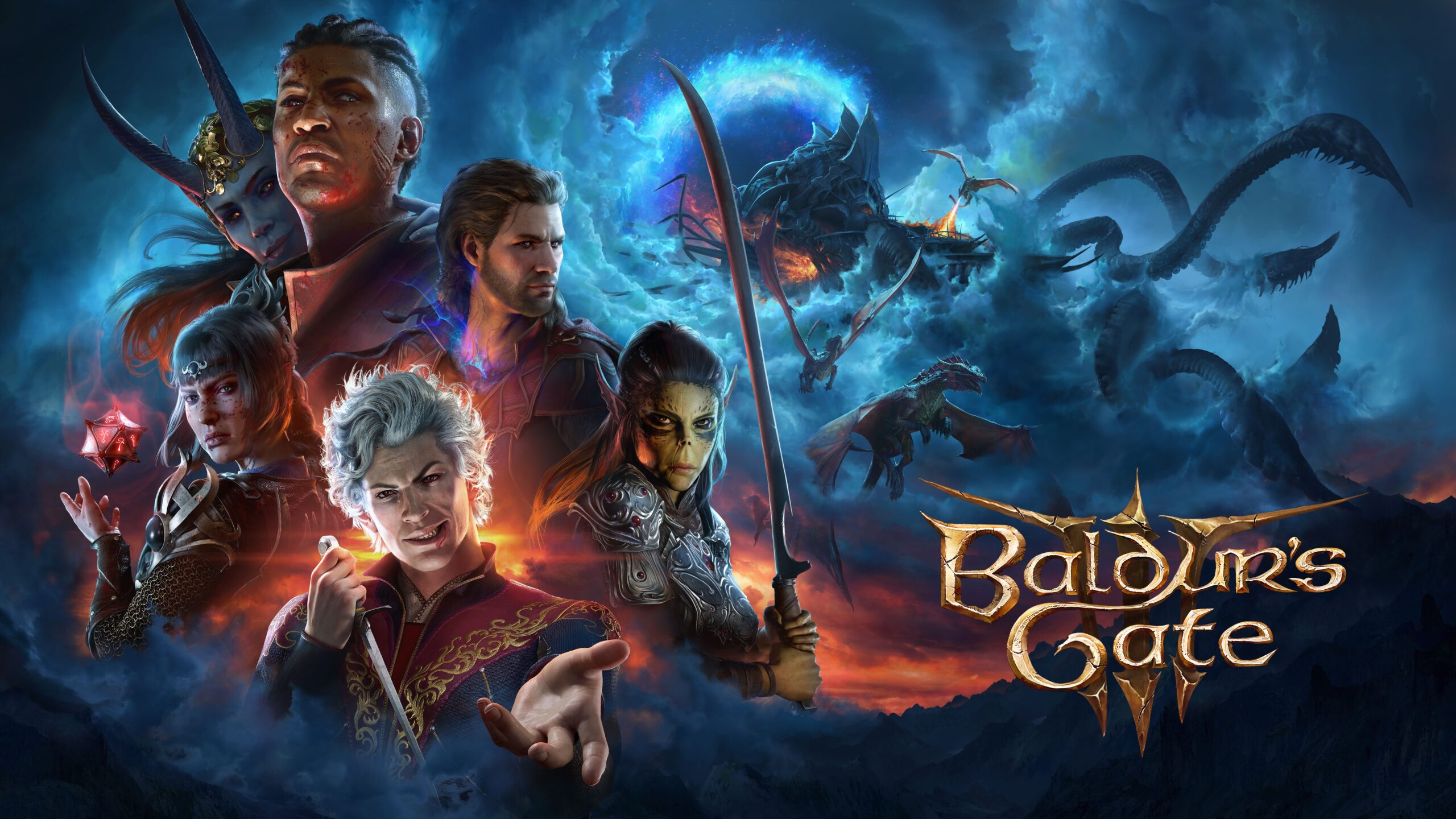
NMH is awesome 🙂